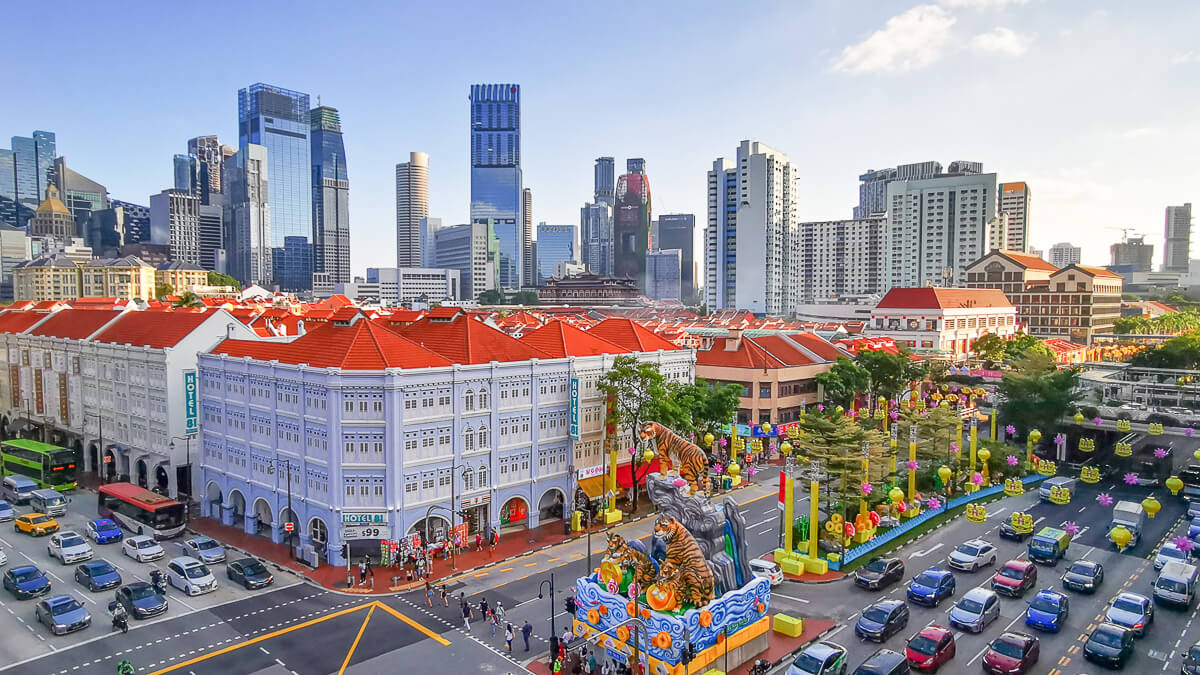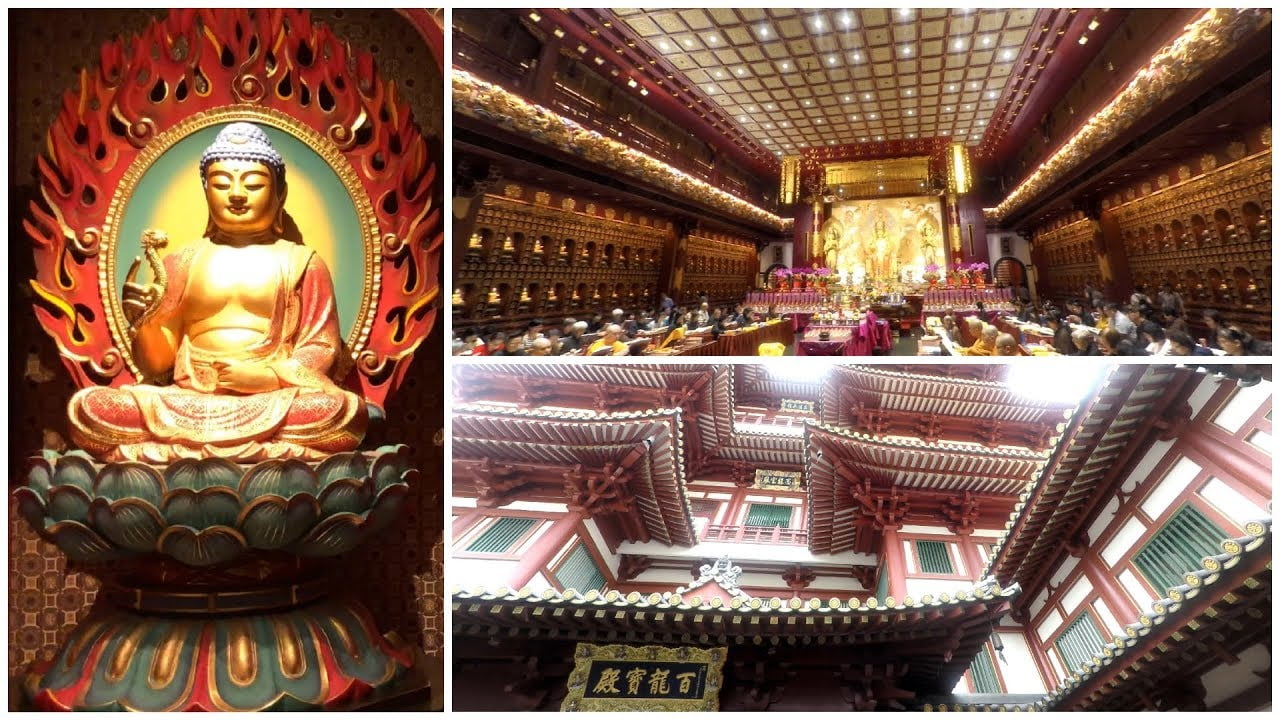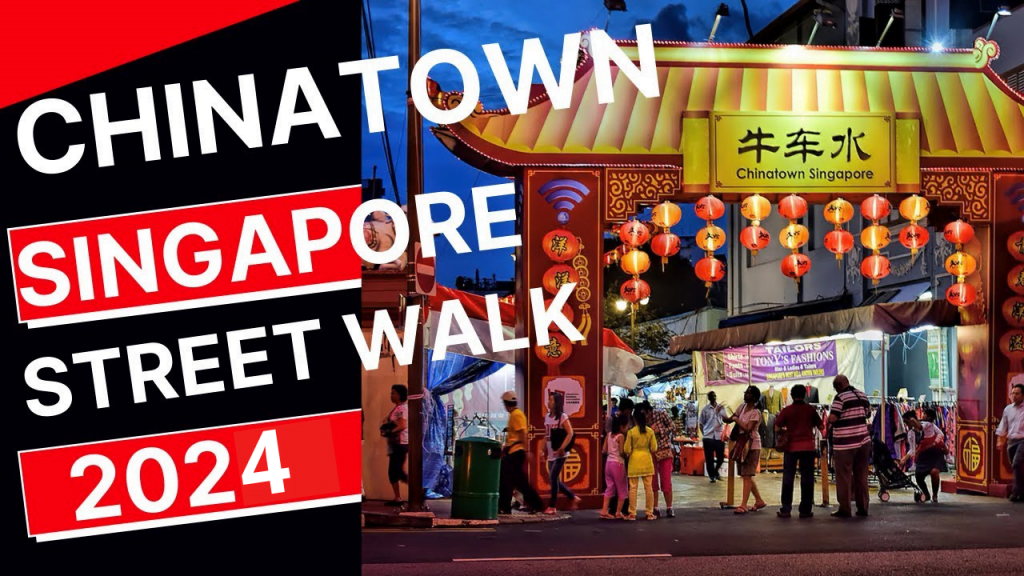Chinatown Singapore is one of the city’s most vibrant and culturally rich neighborhoods. Known for its rich heritage, bustling streets, and diverse offerings, Chinatown is a must-visit destination for both tourists and locals alike.
This detailed guide will cover why Chinatown is famous, what makes it special, and various aspects of visiting and staying in this iconic area.
Why is Chinatown Singapore Famous?
Chinatown in Singapore is renowned for its historical significance, vibrant street life, and cultural diversity. It is a testament to Singapore’s multicultural heritage and serves as a focal point for Chinese culture within the city-state.
The area is famous for its beautifully preserved shophouses, traditional markets, and a plethora of temples, including the famous Buddha Tooth Relic Temple.
The streets of Chinatown are lined with numerous food stalls and restaurants offering a wide array of traditional Chinese dishes.
From dim sum to Hainanese chicken rice, the culinary experiences in Chinatown are unparalleled. The area is also known for its festive celebrations, especially during the Chinese New Year, when the streets come alive with lanterns, lion dances, and various cultural performances.
What is Special About Chinatown in Singapore?
Chinatown in Singapore stands out due to its unique blend of old-world charm and modern attractions. The neighborhood is a living museum, where visitors can experience the traditional Chinese way of life amidst a modern urban setting.

The preservation of historical buildings alongside contemporary developments creates a unique juxtaposition that is visually and culturally enriching.
The Buddha Tooth Relic Temple is a significant landmark in Chinatown, housing a sacred relic believed to be the tooth of Buddha.

The temple’s intricate architecture and serene ambiance attract visitors from all over the world. Another notable site is the Sri Mariamman Temple, the oldest Hindu temple in Singapore, which adds to the multicultural tapestry of the area.
Chinatown is also home to various museums, such as the Chinatown Heritage Centre, which offers insights into the lives of early Chinese immigrants. The street markets, selling everything from traditional herbs to modern gadgets, provide a sensory overload, making each visit an adventure.
Is it Worth Going to Chinatown in Singapore?
Absolutely. Chinatown is a microcosm of Singapore’s rich cultural tapestry. Whether you are a history buff, a foodie, or simply someone who enjoys exploring vibrant neighborhoods, Chinatown has something to offer. The area is a treasure trove of historical landmarks, culinary delights, and cultural experiences that provide a deeper understanding of Singapore’s heritage.
Visiting Chinatown allows you to immerse yourself in a part of Singapore that has retained its traditional charm while embracing modernity. The sights, sounds, and smells of Chinatown create a memorable experience that is both educational and enjoyable.
What Time is Best to Visit Chinatown Singapore?
Chinatown can be visited at any time of the day, but the best times are typically in the late afternoon and evening. During the late afternoon, the weather is cooler, making it more comfortable to walk around and explore the streets and markets. This is also a great time to visit temples and museums before they close.
In the evening, Chinatown truly comes alive. The streets are illuminated with lanterns, and the markets are bustling with activity. The night markets offer a unique shopping experience, and the food stalls are in full swing, offering a variety of delectable dishes. The vibrant nightlife in Chinatown includes bars and clubs that add to the lively atmosphere.
Is Chinatown Singapore Open at Night?
Yes, Chinatown is open at night and is one of the best times to experience the area. The night markets, in particular, are a highlight, offering a wide array of goods and street food. The bustling atmosphere, coupled with the beautifully lit streets, makes for a delightful evening out. Many of the shops and restaurants remain open until late, providing ample opportunities for dining and shopping.
Why Stay in Chinatown, Singapore?
Staying in Chinatown offers numerous advantages. The area is centrally located, making it easy to access other parts of Singapore. Chinatown is well-connected by public transport, with the Chinatown MRT station providing easy access to the rest of the city in Singapore. The neighborhood itself is packed with amenities, from shopping and dining to cultural attractions.
Chinatown offers a range of accommodation options, from budget hostels to luxury hotels, catering to all types of travelers. Staying in Chinatown allows you to experience the vibrant street life and immerse yourself in the local culture. The area is safe, lively, and full of character, making it an ideal base for exploring Singapore.
Which Station is Chinatown Singapore?
Chinatown is served by the Chinatown MRT station, which is an interchange station on the North East Line (NEL) and the Downtown Line (DTL). The station’s strategic location makes it convenient for visitors to access Chinatown and explore its attractions. The MRT system in Singapore is efficient and reliable, making it easy to navigate the city and reach Chinatown from other parts of Singapore.
What is Special in Chinatown Singapore?
Chinatown Singapore is special for its unique blend of cultural heritage and modern amenities. The area is home to several iconic landmarks, including the Buddha Tooth Relic Temple, Sri Mariamman Temple, and Thian Hock Keng Temple. Each of these religious sites has its own historical significance and architectural beauty.
The Chinatown Heritage Centre is another special attraction, offering visitors a glimpse into the lives of early Chinese settlers in Singapore. The center’s exhibits and interactive displays provide a comprehensive overview of the area’s history and culture.
The food scene in Chinatown is also exceptional. The area is famous for its hawker centers, such as Maxwell Food Centre and Chinatown Complex Food Centre, where visitors can sample a wide variety of local dishes at affordable prices. The street food stalls and traditional restaurants offer a culinary journey that is both diverse and delicious.
What are Some Fun Facts About Chinatown Singapore?
- Niu Che Shui: Chinatown was originally known as Niu Che Shui, which means “bullock cart water” in Chinese. This name was derived from the bullock carts that were used to transport water in the area during the early days of Singapore.
- Lantern Festival: During the Mid-Autumn Festival, Chinatown hosts a spectacular lantern display. The streets are adorned with colorful lanterns, and various cultural performances take place, attracting both locals and tourists.
- Heritage Shophouses: The shophouses in Chinatown are not just beautiful; they are also historically significant. Many of these buildings date back to the early 20th century and have been carefully preserved to maintain their original charm.
- Street Art: Chinatown is home to several vibrant murals and street art installations. These artworks add a modern touch to the historical neighborhood and provide great photo opportunities.
- Chinatown’s Night Market: The night market in Chinatown is one of the oldest and most famous in Singapore. It offers a wide range of goods, from traditional Chinese crafts to modern gadgets, making it a popular destination for shopping enthusiasts.
How Much Time to Spend in Chinatown, Singapore?
The amount of time you spend in Chinatown depends on your interests and schedule. However, a full day is recommended to fully explore the area. This allows you to visit the major attractions, enjoy the local food, and soak in the vibrant atmosphere.
If you are short on time, a half-day visit can still cover the main highlights, such as the Buddha Tooth Relic Temple, Chinatown Heritage Centre, and the street markets. An evening visit is also highly recommended to experience the night market and the lively nightlife.
Why is Chinatown in Singapore Called Niu Che Shui?
Chinatown in Singapore was originally called Niu Che Shui, which translates to “bullock cart water” in Chinese. This name was derived from the bullock carts that were used to transport water to the area in the early days of Singapore’s development. During that time, water was scarce, and bullock carts were the primary means of transporting it from the wells and reservoirs to the different parts of the city.
The name reflects the area’s historical significance and the way of life of the early settlers. Over time, as Singapore developed and modernized, the name evolved to Chinatown, but the historical name Niu Che Shui remains a reminder of the area’s rich heritage.
What is the Story of Chinatown in Singapore?
The story of Chinatown in Singapore dates back to the early 19th century when the British established a trading post on the island. The area was designated as a Chinese settlement by Sir Stamford Raffles, the founder of modern Singapore, as part of his town plan. The first Chinese immigrants were mainly traders, laborers, and craftsmen who arrived in Singapore seeking better opportunities.
As the Chinese community grew, Chinatown became a bustling hub of commerce and social activity. The immigrants brought with them their customs, traditions, and religions, which shaped the cultural landscape of the area. Over the years, Chinatown evolved, with the construction of shophouses, temples, and markets that catered to the needs of the community.
During World War II, Chinatown was heavily affected by the Japanese occupation of Singapore. Despite the hardships, the community remained resilient and continued to thrive after the war. In the post-war years, Chinatown underwent significant changes, with efforts to preserve its historical buildings and cultural heritage.
Today, Chinatown stands as a vibrant neighborhood that showcases the rich history and cultural diversity of Singapore. It is a testament to the contributions of the early Chinese immigrants and their enduring legacy in shaping the city’s identity.
Conclusion
Chinatown in Singapore is a unique and fascinating destination that offers a blend of historical charm and modern attractions. From its rich cultural heritage to its vibrant street life, Chinatown provides a diverse range of experiences that cater to all types of travelers.
Whether you are exploring its temples, sampling its culinary delights, or simply soaking in the lively atmosphere, Chinatown is a place that captures the essence of Singapore’s multicultural spirit. So, if you are planning a visit to Singapore, make sure to include Chinatown in your itinerary for an unforgettable experience.

